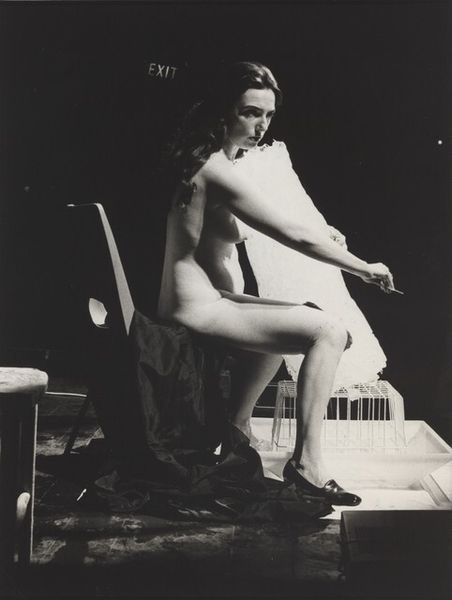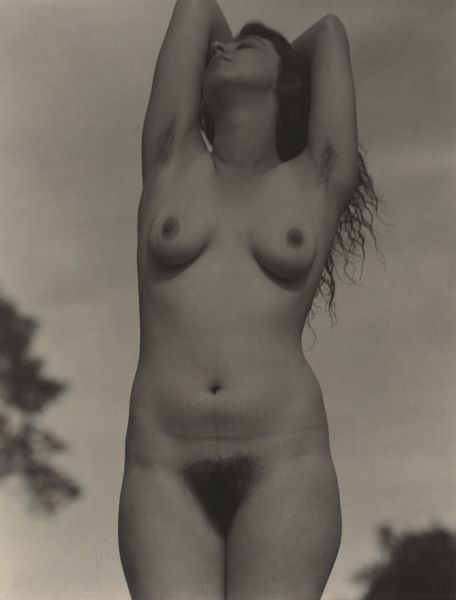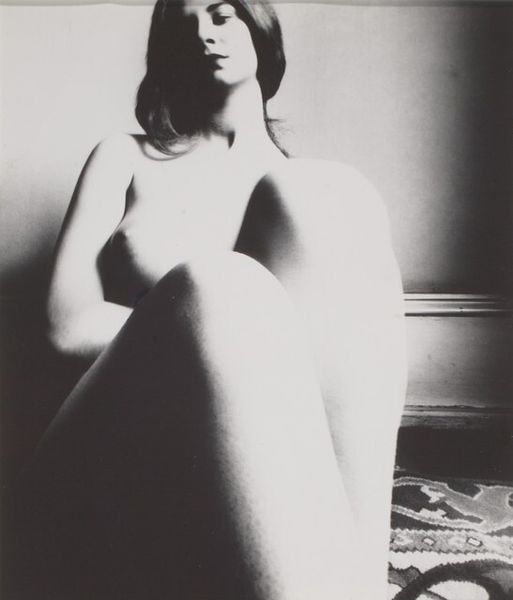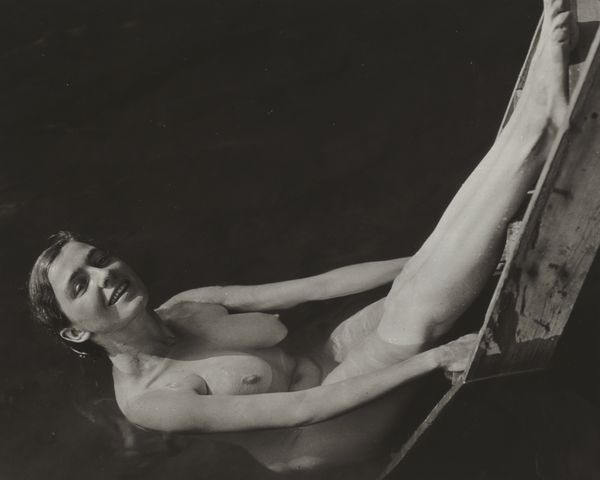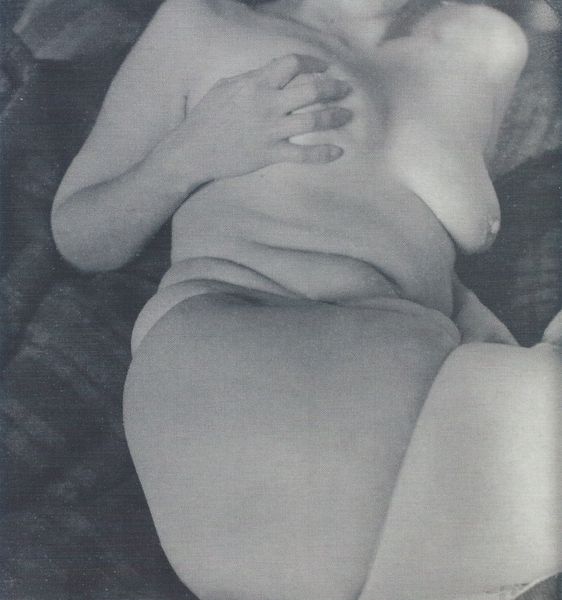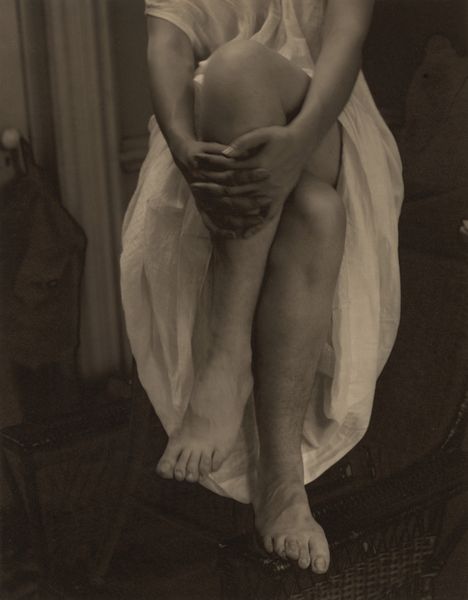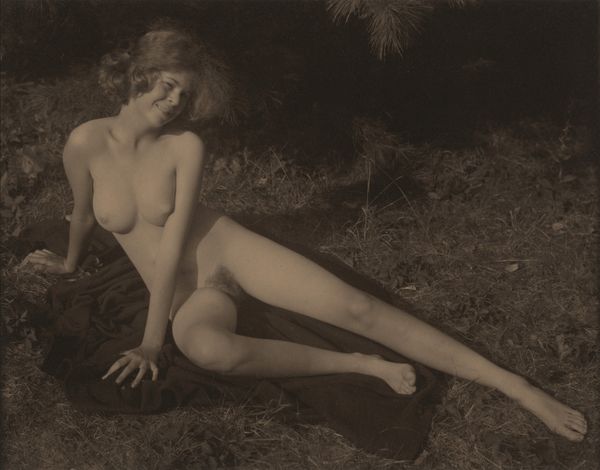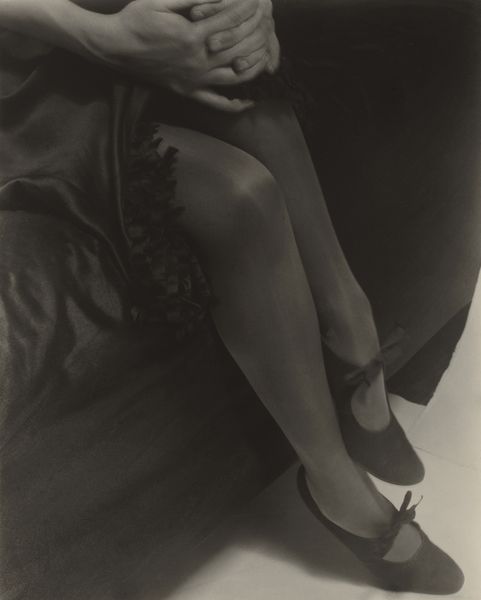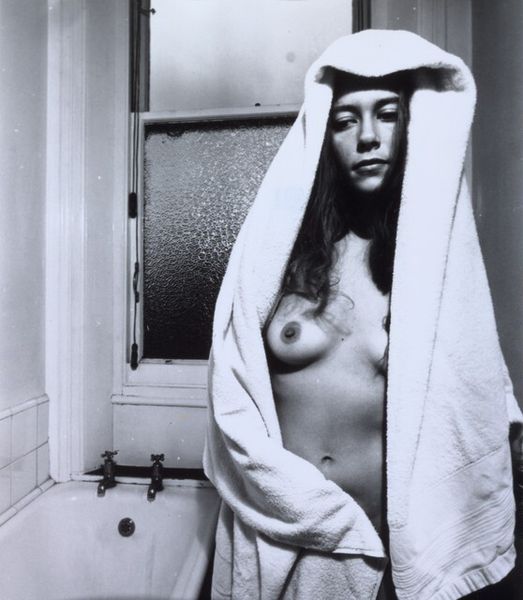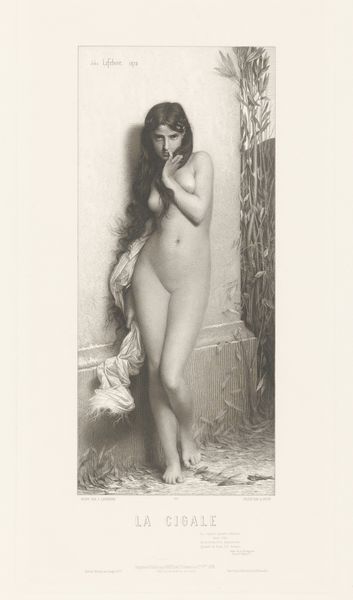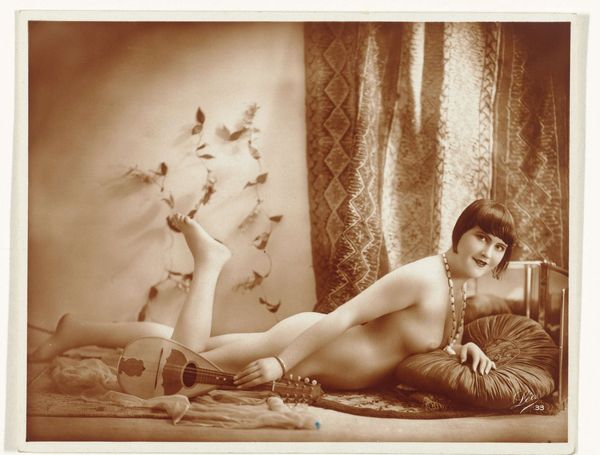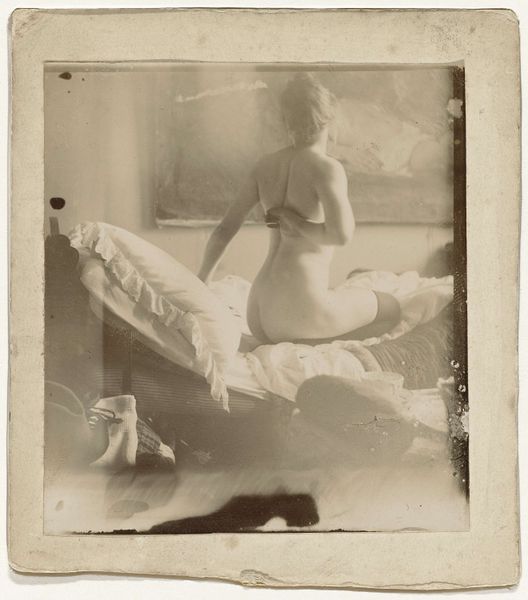
photography, gelatin-silver-print
#
portrait
#
pictorialism
#
photography
#
gelatin-silver-print
#
monochrome photography
#
nude
#
modernism
#
monochrome
Dimensions: sheet (trimmed to image): 11.2 × 8.85 cm (4 7/16 × 3 1/2 in.) mount: 34.6 × 27.6 cm (13 5/8 × 10 7/8 in.)
Copyright: National Gallery of Art: CC0 1.0
Curator: Before us, we have Alfred Stieglitz's gelatin silver print, "Frances O'Brien," created in 1926. What are your initial thoughts? Editor: The photograph immediately strikes me as very intimate, almost confrontational, in its vulnerability. The woman’s gaze is piercing. There’s a challenging energy to the photograph. Curator: I see that intensity as well. Stieglitz was deeply invested in portraying not just likeness, but inner states through symbolic forms. The kettle she's holding becomes quite totemic. Note the upward angle – almost heroic. What deeper cultural narratives resonate with you here? Editor: Well, given Stieglitz’s history with women artists and models – especially the later years of his life – I think it is imperative to look at this not only as an example of his photography and approach to pictorialism but through the lens of gender and power dynamics, which have shifted over time but have impacted on many female models and assistants within avant-garde photography. There's a narrative around who holds the kettle, who benefits from it, figuratively. Is the modern, sexually liberated female figure, which emerged through modern art like that Stieglitz pursued, actually benefiting from these trends or also exposed and commodified by them? Curator: The kettle is an intriguing object. Considering this image was made in 1926, during an era that embraced modernity, could that vessel symbolize something functional? Perhaps her role in the daily rituals of life and as the bringer and nourisher of such rites? Editor: I would say it complicates her portrayal, indeed. She exists between artifice and authenticity, power and subjugation. Perhaps it even makes us examine who she even represents given she holds no name in the artworks given name only ‘Frances O’Brien’ which perhaps could lend itself as a nod to representing all ‘Frances O’Briens.’ The composition feels intentional, calculated. Are we, the viewers, also implicated? Curator: That tension between the classical and the modern, and our relationship to both, feels key to understanding Stieglitz’s intention. I think that this image, therefore, continues to pose complex and essential questions for contemporary audiences, who also look, who gaze, and who, themselves, are now watched by digital reproductions of people and faces in return. Editor: Agreed. The dialogue it ignites between visibility, power, and representation makes this much more than a simple portrait; it is a social and visual commentary that's still potent.
Comments
No comments
Be the first to comment and join the conversation on the ultimate creative platform.
